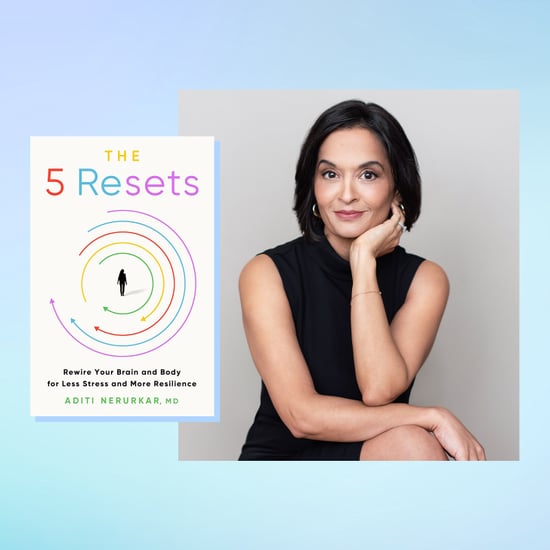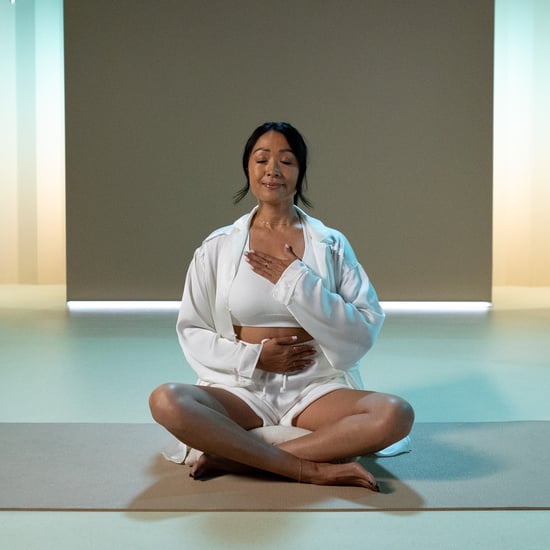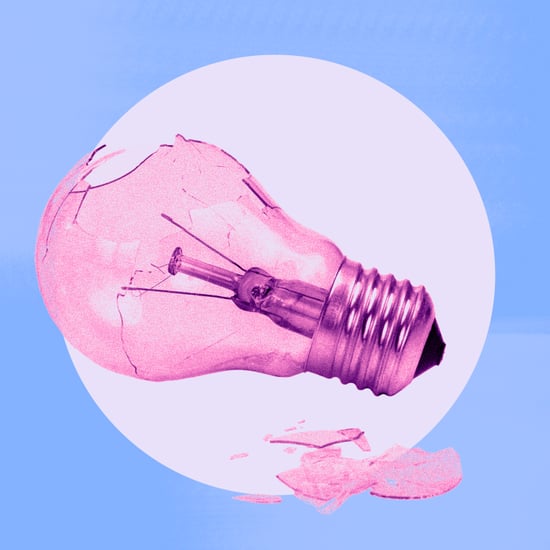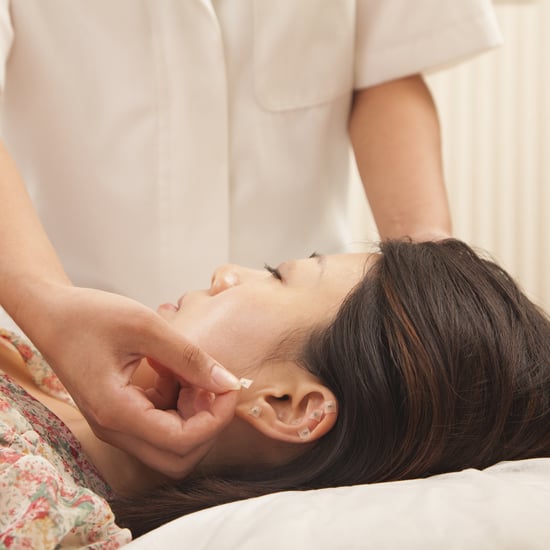Bed of Nails Acupressure Mat Review
We Tried Out the Bed of Nails Acupressure Mat That Promises to Relieve Stress and Insomnia
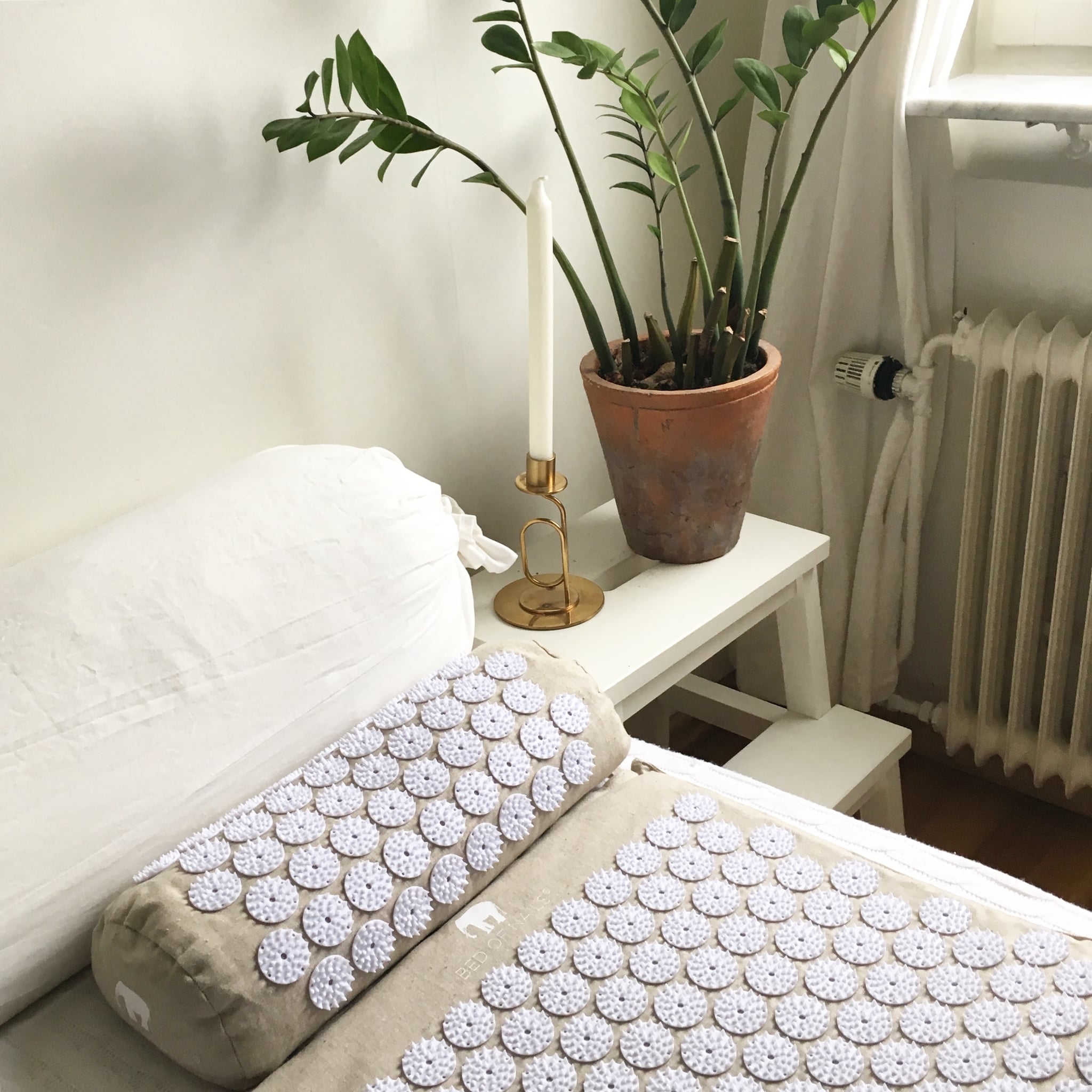
Every week, it feels like there's a new influx of products claiming to improve our wellness routine. So, when I heard about acupressure mats, I was intrigued from the start. I was particularly interested in Bed of Nails, a Swedish company specialising in acupressure mats, which are essentially linen mats with hundreds of tiny plastic "nails" attached to them. Don't worry, it's not as scary as it sounds: quite the contrary. It claims to be both relaxing and energising (no easy feat). Further claims include lowering stress, improving sleep, improving heart rate, and relieving chronic neck and back pain. It seemed too good to be true, so I wanted to find out from the experts whether it is as magical as it sounds. I also wanted to see how my stress and energy levels would be affected from consistent use of the Bed of Nails Eco Mat (£90) — so I put it to the test for three weeks.
What is Acupressure?
Acupressure is similar to acupuncture, in the way they both target specific pressure points (or meridians) in the body. The former uses hand pressure and the latter uses needles (that carefully pierce the skin). "Acupressure uses external pressure applied with fingers or devices rather than acupuncture needles," says Dr Mike Cummings, medical director at the British Medical Acupuncture Society. They both derive from traditional Chinese culture that believes the vital energy (or qi, pronounced chi) needs to flow freely through the body — from our head to fingertips. When there's stagnant energy, we can feel pain, pressure, or experience sore muscles. This practice helps restore the free movement of energy and subsequently our body's health.
An acupressure mat combines the two practices in a sense as there's more pressure applied to the skin than is applied to the hands. This, as with all practices and products, has its pros and cons. "Acupressure mats have similar effects with acupressure points and acupuncture because they use several acupressure points. The mats use many different acupressure points at the same time," says Chrysa Vafeiadi, Msc physiotherapist, "The acupressure techniques use the same meridian and acupoints like acupuncture running through some channels in our body", she adds. Targeting acupressure points can be beneficial overall and can decrease pain while improving wellness. However, care should be taken on the type of ailment you use the mat to treat, Vafeiadi says, but we'll go into more depth on that later.
Instead of targeting individual pressure points, an accupressure mat applies many small points of pressure across a large area. "The points of the mat area are designed to prevent skin puncture but allow quite high points of pressure to be applied to the skin," Dr Cummings says.
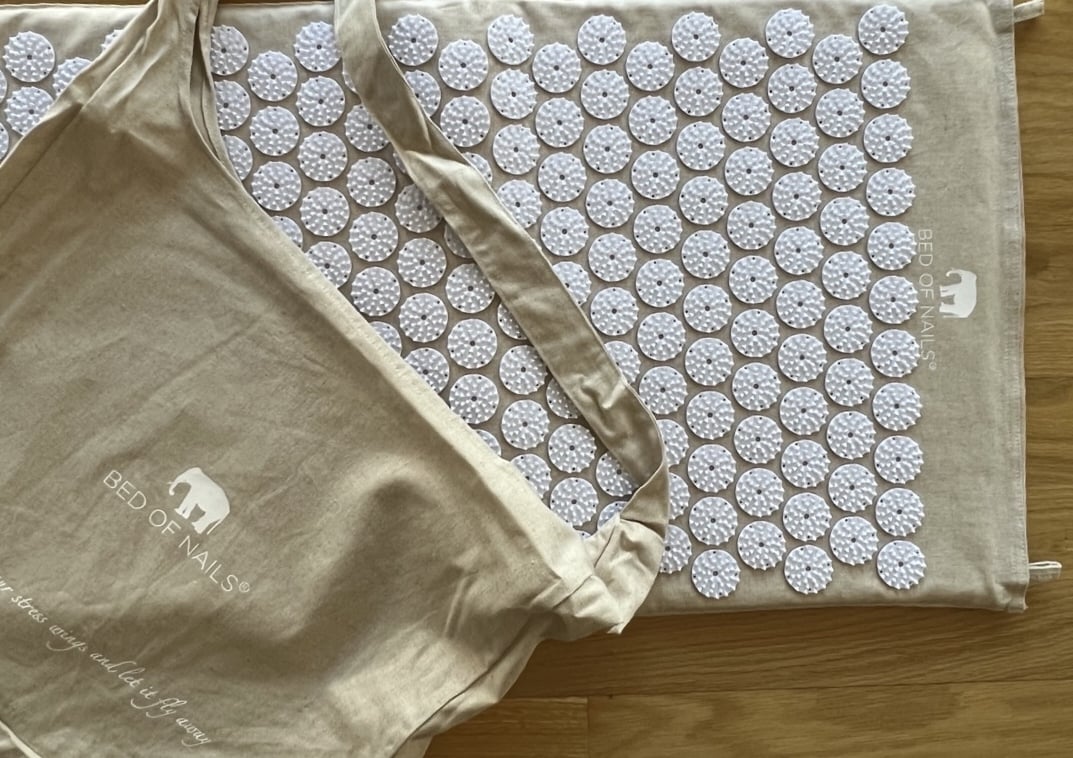 Image Source: Fani Mari
Image Source: Fani Mari
Bed of Nails has a few different products to choose from, including mats, pillows, and body wraps. I was specifically interested in their eco-friendly range, Eco Bon. This range uses 100 percent organic linen, coconut fibres, which is recyclable and biodegradable. The nails are made from 100 percent recycled plastic, which are secured using a melting process (to avoid the use of plastic-based glue). Bed of Nails uses more nails than other brands do, meaning it not only target more acupressure points, but it's also less painful since the body weight is more evenly distributed. The mat I am testing has a total of 8,820 nails, which sounds intense, but I promise it isn't.
The brand recommends using it on bare skin, but for acupressure mat novices this might feel too intense. In that case, you can start with light clothing. The goal is to use it for a 20-minute session, which can be split up throughout the day if you wish. It's important to lay still and wait until the initial tingling goes away. They recommend putting the mat against the back of a couch or chair and leaning on it, and once you are ready for a more intense session, lay on the mat on your bed or the floor. The mat is quite compact and comes with a case made from the same organic linen as the mat. It's lightweight and easy to carry around. They also make a thinner travel version.
The Acupressure Mat Experiment
As someone who works on my laptop most of the day, my upper back and neck are the most tense, and I'm often in pain in that area. I also get tension headaches, which can be worsened by stress, and I occasionally suffer from insomnia. The brand claims all these ailments can be improved by the use of their mat. I exercise and do yoga regularly, which helps my back and stretches my body. However, I was intrigued to see how the mat could help even further. Finally, I'm not a morning person, so I was very interested to see if this practice could help with my energy levels in the morning, as well as help me to relax before bed at night.
Now, for the actual experiment. "It is recommended to use the acupressure mat for up to 20 minutes. You should put it on a stable surface, and you can lie on it slowly, or try to sit on it at the beginning," says Vafeiadi. I tested it in a few different ways: lying down on my back, standing on it, and meditating while sitting on it. Since bare skin is preferred, that's what I aim to work my way up to.
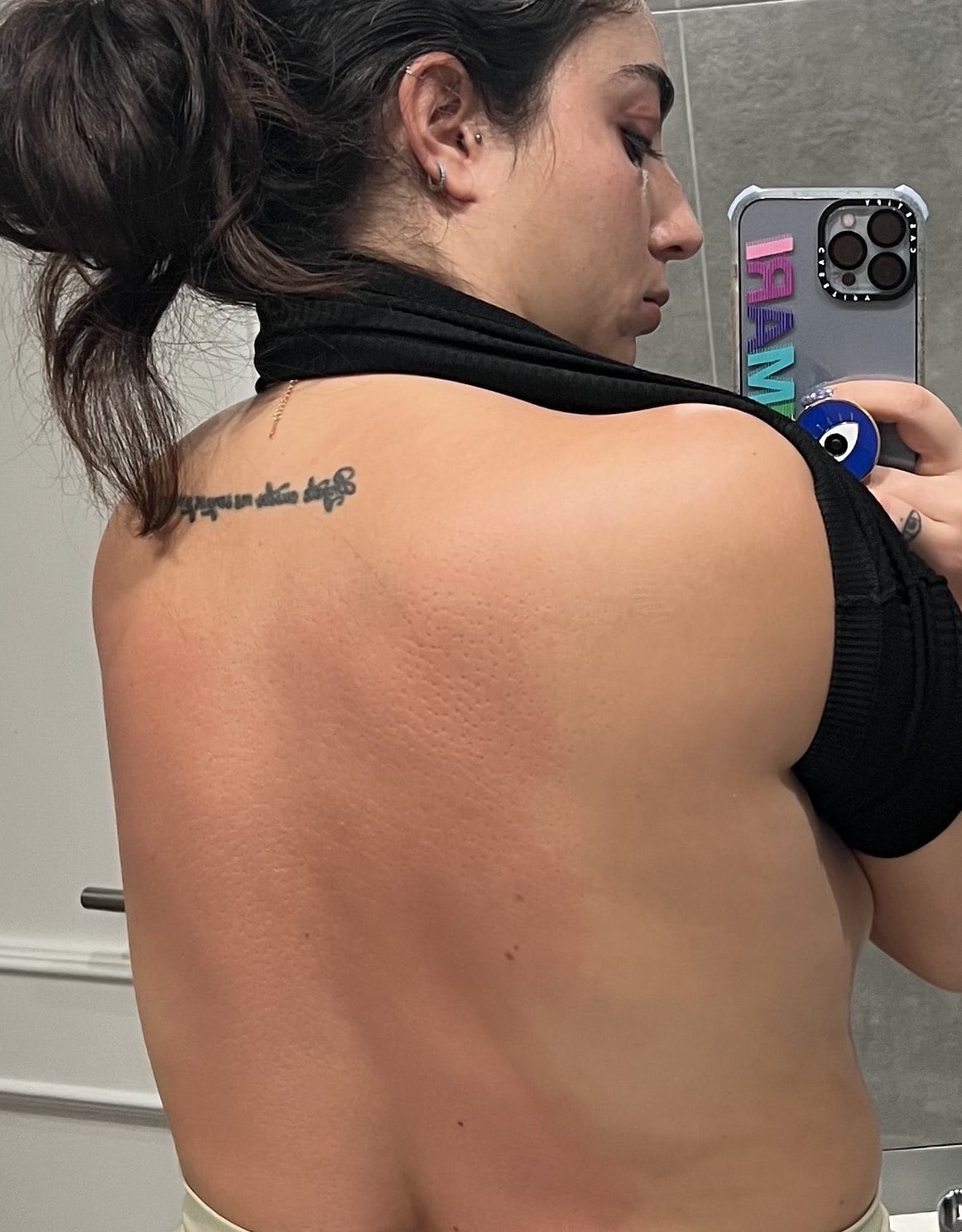 Image Source: Fani Mari
Image Source: Fani Mari
Week 1 Using Bed of Nails:
For my first session, I put it on the back of my chair wearing a light T-shirt and gently sat back into it. Initially, it was a little uncomfortable: the points are sharp but not painful.
While it was a great intro, I didn't feel like that was enough to target my back pain, so for my next session, I laid the mat on my bed with a bare back. I was about to enter a 6 p.m. meeting before this session and was feeling a little sleepy, but after seven minutes on the mat, I felt more energised. It was a little uncomfortable, but it's something I got used to over time. My back was a little red, and I could almost feel the needles even after the session — it was like a tingling sensation. I was also more relaxed despite a long day on my laptop.
Week 2 Using Bed of Nails:
At the start of the second week, I decided to increase my time on the mat to 10-15 minutes and also started incorporating it into my nighttime routine. I wear a FitBit to monitor my heart rate, and surprisingly, my heart rate was lower right after using the mat.
I decided to also add the mat as part of my morning meditation practice. It felt relaxing and energising ahead of a working day. By the end of week two, I was more used to the prickly feeling, and it didn't hurt as much. I have been using it for 10 minutes every morning. My back is normally quite tense (working on a laptop all day doesn't help), but this week, I could tell that the mat relieved some of that pressure.
Week 3 Using Bed of Nails:
For this final week of the experiment, I decided to mainly use the mat in the morning as that's when it seemed to help me the most. Around 10 minutes is the sweet spot for me at the moment, but I'll aim to increase to the recommended 20 minutes by the end of the week.
My body is quite tense in the morning, so targeting these acupressure points really helped me. I found that combining the mat with a short 5-10 minute meditation routine helped both my mind and body in a positive way. I started off the day a lot less stressed as it helped to clear my head. By the end of the week, I was also much more used to the tingling and prickling sensation than I was at the start of the experiment.
Acupressure Mat Positives
Generally speaking, targeting acupressure points can relieve stress by lowering cortisol, improving sleep, releasing endorphins (and even helping with anxiety), improving the heart rate and increasing oxytocin (the hormone released at night to prepare us for sleep), and may even help with migraines.
The scientific studies on the subject are still limited, but the evidence and expert thought is promising. Vafeiadi recommends targeting the specific acupressure points depending on where you are feeling pain. This could be your back, neck, and even cramps caused by your cycle. As with a lot of practices and products that aren't thoroughly tested, the results may be a placebo effect.
Finally, the biggest positive, explains Dr Cummings is that the acupressure mat can be used at home whenever is needed. "If this reduces the need for medication or other interventions with potential side effects, then that is a good thing," says Dr Cummings.
Acupressure Mat Negatives
Vafeiadi says that it's really important not to use an acupressure mat to treat musculoskeletal pathologies, where it's preferable to see a specialist like a physiotherapist or a doctor first. It's generally a safe treatment, but you should consult your doctor first in the following cases: skin lesion irritations, cancer, pregnancy, chronic diseases (such as rheumatoid arthritis), coagulation disease, heart disease, very low blood pressure, acute inflammations, lung failure, anticoagulant users, and epilepsy. "It's very unlikely that these mats would cause any nerve damage or long-term problem provided that they are used sensibly. The only risk I can imagine would be in individuals with very sensitive or frail skin, where damage from minor injury is easy," says Dr Cummings. He notes this treatment should only be used for "existing aches and pains or for relaxation rather than for treating new conditions that have not been assessed by a professional."
Final Verdict on the Acupressure Mat:
In short: yes, it worked on many of the claims. I was a bit apprehensive using the Bed of Nails mat at first, especially with some of its big promises. But I was surprised to find out that it was especially great at stress and anxiety relief, as that's something that bothers me daily.
I wish the mat was a little wider, so that my shoulders would fully touch the needles. I presume if you have a smaller frame, you might not have this issue.
In terms of mental health and physical effects, I realised that using the mat at night energised me more than it relaxed me. For that reason, I'll incorporate the mat into my morning or a daytime routine, rather than at night. It helps me start the day right and stress-free (as much as possible). It also helped my sore back almost instantly, which is something I don't often experience (only with intensive stretches). I personally didn't notice any improvements in terms of my sleep. Using it with a bare back is essential as, even with a light top massively minimises the effect of the needles. Finally, consistency is important with this mat, which may not always be possible in daily life. I find this to be the case with most spiritual or wellness practices, so the consistency of use depends on one's priorities.
